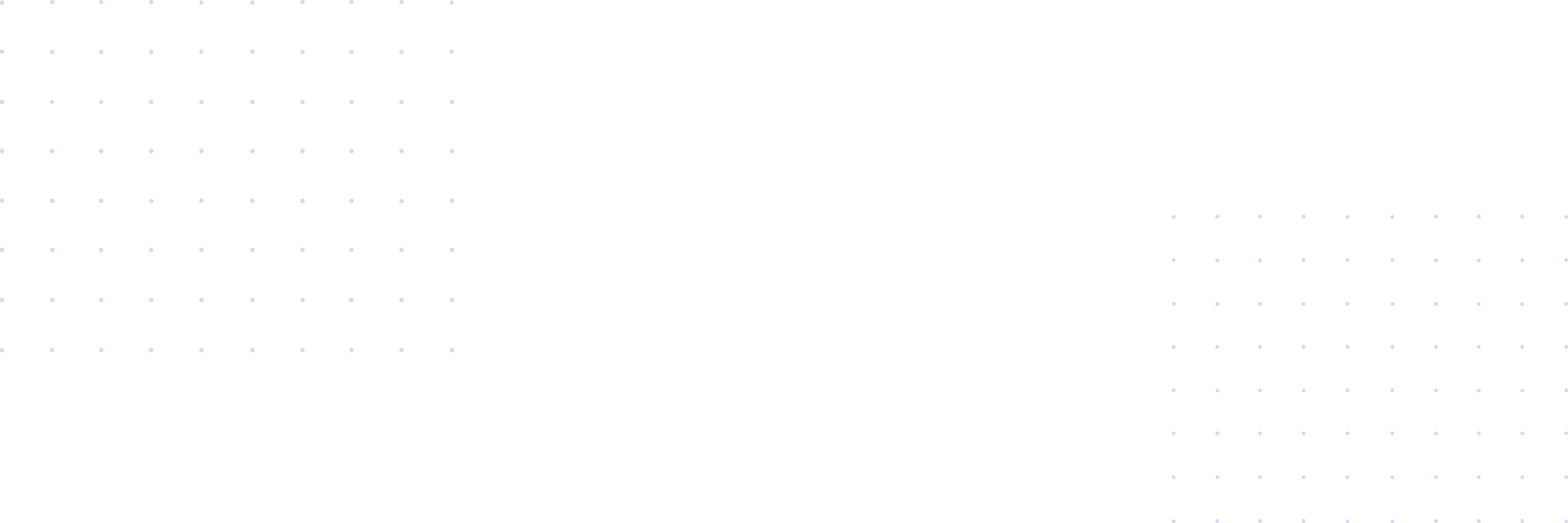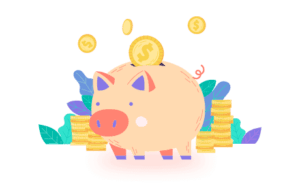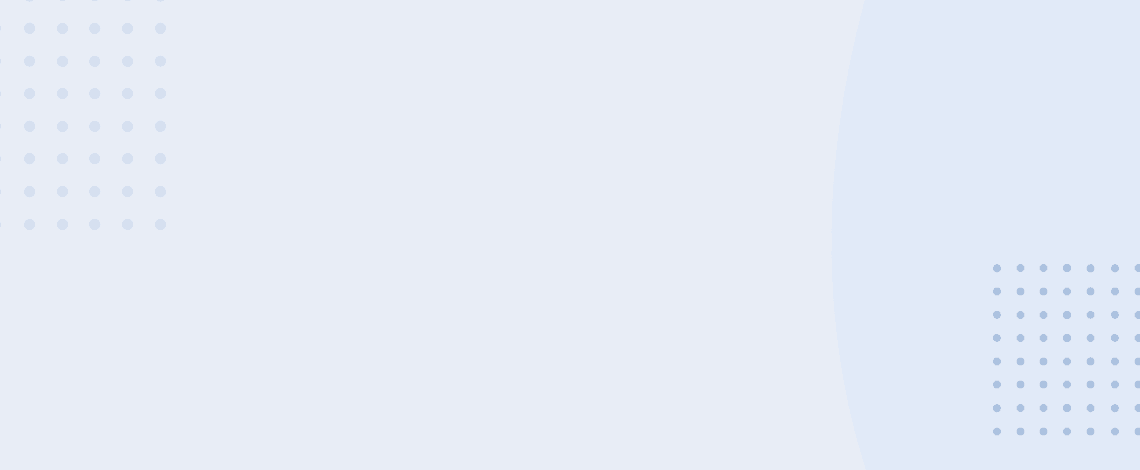Creating a bank account is an important step toward financial freedom. A bank account allows you to receive ACH transfers, earn interest on your extra money, and store your money in an FDIC-insured account. Consumers can open several types of bank accounts, but a checking account comes up again and again. This guide will explore how checking accounts work, what to look for in the best checking accounts, fees, features, and other important details.
Introduction to Checking Accounts
Many people start their banking experience with checking accounts. These accounts allow you to store money, but that doesn’t make them any different from savings accounts and brokerage accounts. While all of these accounts let you store money, checking accounts have a few distinctions.
What are Checking Accounts?
Checking accounts allow you to store money in an FDIC-insured account and collect interest. Banks, credit unions, and online banks offer these accounts. Checking accounts are primarily for funds you plan to spend within a few weeks or months. These accounts can help you cover everyday expenses and pay off your credit card debt.
How Checking Accounts Work
Financial institutions store people’s money and have a partnership with the Federal Deposit Insurance Corporation that offers more protection than hiding your cash under the mattress. Account holders can make payments through electronic deposits or by writing checks. When you write a check, you write it against your checking account. If you write a $50 check, then a $50 money transfer will take place when the recipient cashes out your check.
Checking accounts has been around for centuries. The earliest checking account in the United States supposedly existed in 1681. Boston businessmen wrote checks against their properties similarly to how people write checks against their bank accounts. Technology has gotten more advanced since then, and many people use debit cards instead of checks to cover most of their expenses. A debit card is essentially a modern-day check.
Checking Accounts vs. Savings Accounts
Checking and savings accounts allow you to store money with your favorite bank. All of the best banks will have FDIC insurance for your bank accounts, and you should not do business with a bank that does not have this insurance.
The main difference between checking and savings accounts is how consumers use the money. Checking accounts is best for short-term expenses. You will likely draw funds from your checking account if you have to pay a bill. You can make an unlimited amount of withdrawals each month from your checking account and won’t get penalized for being very active with that account.
Many banks only let you make six withdrawals per month from your savings account. Additional withdrawals can result in extra fees. While this withdrawal limit may seem like enough to deter consumers, many people still use these accounts. That’s because savings accounts have higher interest rates than checking accounts.
Many people are looking at an interest rate below 0.10% APY with their checking accounts. You aren’t going to build any type of meaningful wealth, let alone buy groceries with a 0.10% APY on your checking account. However, savings accounts have much higher rates. It’s easy to find savings accounts with 2% APY, and it’s even possible to find savings accounts with rates above 4% APY.
That APY can turn your $10,000 in savings into $200-$400 per year, or even more depending on the rate you get. Some savings accounts have more restrictions about when you can withdraw money without incurring fees, such as certificates of deposit. However, these CDs have higher yields than savings accounts that can exceed 5% APY in some cases.
You will earn more with a savings account, but a checking account is critical for covering expenses. Consumers may want to consider a checking account as the resource that protects the funds in your savings account. It’s essentially a buffer that allows your savings and investments to grow undisturbed.
The Top Providers Offering Checking Accounts
Consumers can choose from many financial institutions to open a checking account. These are some of the top choices to consider.
Types of Checking Accounts
Wondering which checking account is right for you? Consumers can choose from several options.
Personal Checking Accounts
A personal checking account contains the funds you can use to pay off your bills and make purchases. Most people use personal checking accounts for their banking experience.
Business Checking Accounts
A business checking account is a useful account that separates your personal assets from your business assets. A business checking account can help you start an LLC or another business entity that gives you personal liability protection. Business checking accounts can also help you establish business credit, which can help you qualify for a business credit card and financing. Business credit cards and financing tend to have better perks and higher loan amounts than personal credit cards and loans.
Student Checking Accounts
Banks encourage students to create accounts with them so these students become customers for life. Student checking accounts give many people a head start with banking. Many of these accounts are more generous with fees and features compared to personal checking accounts. Students usually don’t have to worry about monthly maintenance fees, and some of these accounts also let students avoid overdraft fees. Getting an early start with banking can help you build solid financial habits and get more control over your finances in the future.
Joint Checking Accounts
Joint checking accounts give multiple people ownership of the funds within the account. Each person on the joint checking account can deposit and withdraw funds from the account. Joint checking accounts are popular among married couples. These accounts can make money management more convenient and provide more transparency between partners.
While these accounts have advantages, it is also important to consider the risks. If the partners break up or there is a dispute, the money is essentially up for grabs for whoever can log into the joint account faster. There are no guardrails preventing one person from spending all of the money in the joint account. It is the blessing and curse of these accounts. Joint checking accounts require a substantial amount of trust between the people who create them. The people listed on the joint checking account can also have separate personal checking accounts.
Senior Checking Accounts
Senior checking accounts are exclusively for bank accountholders who are 55 years or older. These accounts include various perks, such as fewer fees. Some banks opt to waive certain fees on personal checking accounts in lieu of giving their customers senior checking accounts when they reach the required age. These accounts help banks retain customers due to the extra perks, but some banks do a better job with senior checking account perks than others.
Common Checking Accounts Features
Checking accounts have several features that incentivize customers to continue doing business with the same bank. While many checking accounts offer these common features, you should compare fees, features, and rewards before choosing the right checking account for your needs.
Debit Cards
Debit cards are a fundamental component of checking accounts. Many banks mail you a free copy of your debit card and give you a virtual card that you can use while waiting for the physical copy to arrive. You can still use a virtual card even when you have received your physical debit card. These cards give you easy access to the funds in your checking account, and you can use this card for any in-person or online expense that accepts the card.
Some debit cards also have rewards programs such as 1% cashback on all purchases. These rewards make debit cards more enticing than cash and checks, but both of those mediums of exchange become necessary for certain transactions.
Debit cards also give consumers the distinct advantage of not accruing credit card debt. While credit cards eliminate the worry of overdraft fees, it is easy to get carried away with credit card spending and end up in significant debt. Debit cards limit you to the funds residing in your checking account. Comparing fees can help you decide which debit card is right for you.
Checkbook
A checkbook allows you to write physical checks against your checking account. These checks can help you pay workers or send cash to friends. Many people mail their checks, and in this case, it is a valuable alternative to a debit card. Debit cards work well for online and in-person transactions, but you wouldn’t mail a debit card to a family member or a friend.
Banks give you the checkbooks you need to facilitate these transactions, but they have different ways of offering this service. Some online banks do not send checkbooks but can distribute checks on your behalf when you need to send one to a recipient. You fill in the details online, and then the bank handles the rest. Some online banks do not charge any fees for this service, allowing you to save a trip to the post office.
Other banks send you a physical checkbook for free, but you are responsible for handing off the check to the post office and covering the shipping. The advantage of a physical checkbook is that you can give someone a check in person instead of having to open a mobile app to initiate a money transfer.
Consumers should assess the fees involved with receiving checks and what happens if the check bounces. Some banks are more lenient with their fees than others.
Direct Deposit
Upon their introduction, direct deposits were revolutionary. Direct deposits allow consumers to receive funds in their checking accounts through an electronic transfer instead of depositing cash or checks. Direct deposits enabled online banks and increased the competition.
Direct deposits have now become an expected component of any financial institution. These deposits make us less reliant on physical cash and checks for our transactions. Many employers pay their workers through direct deposit instead of physical checks, making the feature more important than ever. You need to provide your employer with your bank account number and your routing number to receive direct deposits. Checking account holders can find this information in their online dashboards through a browser or the bank’s mobile app.
Wire Transfer
Wire transfers allow consumers to transfer money overseas. Banks settle the transactions so the recipient can receive funds sooner. Wire transfers are more convenient than mailing money or a paper check, but these transfer fees can get costly.
Some wire transfer fees can get as high as $50, depending on the bank and where you want to send the funds. Not every consumer uses this feature, and if you don’t plan to conduct wire transfers, you don’t have to worry too much about the high fee. However, if you plan on initiating wire transfers often, the fee per transaction becomes a critical factor when deciding which checking account is right for you.
Some banks may waive this fee if you ask, but if you use this service often, the bank may not waive each fee. Using a multi-currency checking account or making cross-border payments can help you avoid wire transfer fees. Some people open digital wallets and trade cryptocurrencies instead of fiat currencies to avoid making wire transfers. Cryptocurrency holders can transfer money internationally without worrying about wire transfer fees or foreign exchange rates.
Bill Pay
Did you have enough money to pay a bill but forgot about it? Watching that bill accrue late penalty fees can be frustrating, especially if you already had enough money to cover it. Most people don’t stay on top of their finances every day, but you can still make on-time payments with Bill Pay.
Bill Pay is a popular feature among many of the top banks that lets consumers automate their bill payments. You can decide when you make bill payments and how much you pay. Bill Pay pulls funds from your checking account to cover bills before their due dates. Consumers have flexibility with how they set up Bill Pay, but the feature is designed to make your finances easier to manage.
Bill Pay is an optional feature. If you can stay on top of your finances and manually pay bills, then more power to you. However, Bill Pay can act as an extra defense that minimizes your expenses and keeps you in good standing with your creditors.
ATMs
ATMs let you deposit and withdraw cash from your bank account, and they are especially useful for stores that only accept cash. However, ATM transfers usually involve fees, especially if you are withdrawing funds from an ATM located in another country.
Some banks invest in ATM networks that allow them to waive fees or reimburse customers for any fees they incur. The ATM coverage varies for each financial institution, and some banks with less ATM coverage make up for it with thousands of physical branches.
Some banks only have 30,000 ATMs in their networks, while other banks have over 60,000 ATMs in their network. Banks build up these networks through partnerships with companies like AllPoint. However, a large ATM network may be insufficient if an ATM isn’t in your area. Many banks let you see in-network ATMs nearby. You should use this feature before committing to a checking account.
Some banks do not have ATM networks but compensate by reimbursing some of your ATM fees, similar to a monthly allowance. If your ATM fees do not exceed the monthly allowance, you will get all of your fees reimbursed. However, if you exceed the “allowance” from a bank that does not have a network of ATMs, you will have to pay some of the fees out of your pocket.
Banks with better ATM coverage tend to be better picks for people who want to avoid fees. ATM fee networks are more important for online banks since they do not have physical branches where you can deposit and withdraw cash.
Online and Mobile Banking
Just like direct deposits, online and mobile banking used to be innovative. Now, they have become expectations. Every bank has an online website and a mobile banking app, but some banks offer better user experiences than others.
You should go to a bank’s website and test out the interface. Do you have an easy time navigating to important pages on the website? Does the mobile app also look like it’s easy to navigate? Banks with clunky website and mobile app designs are more difficult to use and can result in missed payments. Make sure you feel comfortable with a bank’s online and mobile experience before committing to a checking account.
Common Fees Associated with Checking Accounts
Checking account holders may incur several fees from their accounts. While checking accounts offer financial protection and can be well worth the fees, it’s still important to know the fees on your account. These are some of the most common checking account fees; luckily, they are all avoidable.
Monthly Maintenance Fees
Many banks have monthly maintenance fees for checking accounts that fall below a certain threshold. Most monthly service fees are roughly $5-$20, but the costs vary across each bank.
Some bank accounts do not have any monthly maintenance fees, regardless of how much money you have saved up. These checking accounts are more friendly for people who are just getting started on their financial journeys. Other bank accounts require that you have a few hundred or thousand dollars saved up in order to avoid the monthly maintenance fee. You should check the required average daily balance when reviewing the monthly fees.
Overdraft Fees
Overdraft fees can rack up if you overdraw your account. If you have a $50 balance and make a 4100 purchase, you will incur an overdraft fee. Most overdraft fees are between $30-$35, and some banks charge multiple overdraft fees each day if you make multiple purchases with a negative balance.
Some banks have overdraft protection in place to minimize the likelihood of encountering this fee. A popular feature is for a bank to tap into your savings account to cover the difference if you overdraw your checking account. Some banks also reject debit card purchases instead of letting them go through if you would incur a negative balance in the process.
Overdraft fees are easy to avoid if you build a good financial buffer. You will not have to worry about overdraft fees if you always have a positive balance in your checking account. Monitoring your expenses, trimming the non-essentials, and developing an effective budget can help you avoid overdraft fees.
Fees for Using Out-of-Network ATMs
Out-of-network ATM fees only cost a few dollars for each transaction, but these fees can add up if you use ATMs often. Some banks mitigate the risk of encountering out-of-network ATM fees by investing in large ATM networks and having physical branches. Online banks tend to focus more on having large ATM networks, while banks with physical branches tend to focus on their properties.
Some banks waive ATM fees or offer a monthly “allowance” that acts as a reimbursement. Consumers should pay more attention to ATM fees if they frequently visit the local ATM. It’s also important to consider how far you are from the closest in-network ATM.
You can reduce your reliance on ATMs by holding onto more paper cash. If you make a $20 withdrawal from an ATM each week, consider making a single $100 withdrawal. Then, you won’t have to visit the ATM for an entire month. Out-of-network ATM fees are one of the many costs of banking that you can avoid with good financial habits and by developing your career and side hustle opportunities.
Pros and Cons of Checking Accounts
Checking accounts is a key piece of the banking experience and financial well-being. However, these accounts have strengths and weaknesses. Leaning into the strengths and minimizing the impacts of a checking account’s shortcomings can help you get the best banking experience.
Pros of Checking Accounts
- Store your money in an FDIC-insured bank account: It’s less risky to keep your money in the bank than hiding it in your house. The Federal Deposit Insurance Corporation protects your checking account up to $250,000.
- Easily access your money: You can readily buy goods and services even if you are in another state or country. You can write checks, withdraw cash, or use your debit card.
- Earn rewards: Some debit cards have cashback rewards that allow you to earn some cash on every purchase.
- Overdraft protection: Many checking accounts have built-in safeguards that reduce how frequently you pay overdraft fees.
- Money management tools: Many checking accounts include money management tools such as budgeting and expense tracking that can help you stay on top of your finances.
- Earn interest on your balance: You will earn more interest with a savings account, but a checking account lets you earn some interest. Some checking accounts even have respectable rates, such as 1% APY, but you will find better rates with a savings account.
- Get a debit card: Checking accounts come with debit cards. These cards don’t rack up debt like credit cards and make it easier to spend the money in your checking account.
- Direct deposit: Employers can pay you electronically instead of writing checks. This route can help you save money; some employers only do direct deposits.
- Unlimited transfers: You won’t get penalized if you withdraw money from your checking account more than six times per month.
Cons of Checking Accounts
- Low interest: You’re lucky if you get a checking account with an APY above 0.10%. That’s a terrible rate for the money you keep in your bank account. Savings accounts have much higher interest rates, with some of them exceeding 5% APY.
- Fees: While many checking account fees are avoidable, they can sting if you ever encounter them.
- Minimum balance requirements: Some banks require that you maintain a minimum balance for your checking account. This minimum balance may be required to help you avoid the monthly maintenance fee or unlock key rewards.
How to Choose the Best Checking Account for Your Needs
Consumers should weigh several factors when assessing checking accounts, but fees, features, and rewards should be the top considerations. Many consumers can escape fees if they pick the right checking account and practice healthy financial habits.
Features also play a key role and depend on what you want from a bank. Not every bank that offers personal checking accounts also offers loans or credit cards. If you need those financial products, you should narrow your search to banks that offer those resources.
Some banks also offer enticing rewards, such as cashback on debit card purchases, sweepstakes, and other perks. Some banks offer perks better than others, and consumers should compare choices to see which bank is the right choice for them.
What Do You Need to Open a Checking Account?
You don’t need much to open a checking account. You only need a government-issued photo ID and basic personal information like your Social Security Number, home address, or phone number. The requirements vary for each bank, but the requests for personal information don’t go much beyond those boundaries.
You must also be at least 18 years or older to open a bank account, but there are a few exceptions. Teens may be able to create checking accounts if a parent or guardian watches over their accounts.
Requirements for Opening a Checking Account
You must be 18 years or older or accompanied by a parent or guardian for banks to allow teens to open accounts. You must also provide identification and basic information about yourself. Some checking accounts require a minimum opening deposit amount.
Process of Opening a Checking Account
The process of opening a checking account is straightforward. You can drive to a local branch and get help with creating your checking account, but it is much easier to create a checking account online.
You can visit a bank’s website and proceed to create your account. Many bank websites make it easy to find the button that allows them to proceed with creating an account. Once you follow the instructions, you will have a checking account. You will have to provide your email address and create a password so you can regularly access your account.
Consumers can also follow the same prompts on their smartphones. Many banks have mobile apps that make it easier for people to do their banking while on the go. You can create an account through a mobile app and proceed to deposit funds into your new checking account.
How Do You Choose the Best Checking Account?
Consumers can choose from many checking accounts, but some of them are better than others. Between features, rewards, fees, and every other component, it’s important to compare checking accounts to determine which one is right for your finances.
Factors to Consider
- Physical Locations: Some consumers prefer to do business with a bank that has physical branches spread throughout the country. Other people don’t care about whether they use a local branch or an online bank that does not have any physical branches.
- Fees: Consumers have to contend with many banking fees, such as overdraft fees, monthly maintenance fees, and ATM fees. Banks with lower fees or easier ways to avoid them should be higher on your list.
- Minimum Monthly Balance and Deposit Requirement: If a bank has a monthly maintenance fee, check the minimum monthly balance before committing to a bank. You should also check the minimum deposit requirement to see how much money you need to open a checking account.
- Money Management Features: Many banks use budgeting tools and other money management tools to enhance their offerings. You can use these tools to improve your finances and achieve your long-term goals sooner.
- Loans: Not every bank offers personal loans, auto loans, or mortgages. If you need these financial products, make sure you work with a bank that offers them.
- Credit Building: If you don’t have the best credit score, you may want to get started with a secured credit card or a credit builder loan. Make sure your desired bank has these options if you need to repair your credit score.
- Debit Card Rewards: Some debit cards have enticing rewards, such as 1% cashback on all purchases. Receiving extra cashback can make all of your expenses more manageable. It’s not life-changing money, but it’s better to make a few hundred extra dollars each year than it is to miss out on that opportunity.
- Website and Mobile Experience: Check a bank’s website and mobile app before committing to a checking account. You can look at the interfaces and online reviews to gauge if these apps and websites will be easy or difficult to use.
- ATM Networks: Many banks invest in ATM networks to minimize the likelihood of customers incurring out-of-network ATM fees. It’s also a good idea to check how a bank handles reimbursements and if it waives fees.
When to Consider Switching
Some people get started with the first checking account they find. Other people open bank accounts with the same financial institutions their parents use. Either way, some people may have checking accounts and believe that the grass is greener on the other side.
In some cases, the grass is indeed greener on the other side, but it’s important to know what key differences are driving your decision. If you primarily use your current bank to save money, you may want to consider switching if you find a bank with a savings rate that is more than double your current bank’s rate. Some people switch even if they can increase their interest income by 20% if they switch to another bank.
Consumers should also assess how their priorities change before switching to a new bank. For instance, you may get started with a bank that does not offer mortgages. This shortcoming may not bother a young adult who is renting and saving up for a house. However, when that young adult saves enough money to buy a home, that person will have to use another bank for the mortgage.
Many banks offer the key features and resources. You can create checking accounts and savings accounts. These banks have fees, but you have ways to avoid them. You can also get debit cards, checkbooks, and other essentials.
Some banks have better perks and features that set them apart. A bank’s debit card perks won’t draw you in as much if you already have a credit card with great rewards and can pay off your bill each month. Understand what is important for your banking experience and only consider a switch if a bank is superior to the essential components of your banking experience.
Steps to Switching Your Checking Account
Switching your checking account is straightforward. You will have to first create an account with the new bank. Many banks make it easy to create checking accounts through their websites and mobile apps.
Once you create your account, you will have to transfer funds from your old checking account to your new checking account. After you complete this process, you will have successfully switched your checking account. You will still have access to your old checking account and can make deposits at any time. Having checking accounts with multiple banks can help you capitalize on the best of both worlds while prioritizing the checking account that offers the most relevant benefits and features based on your financial objectives.









